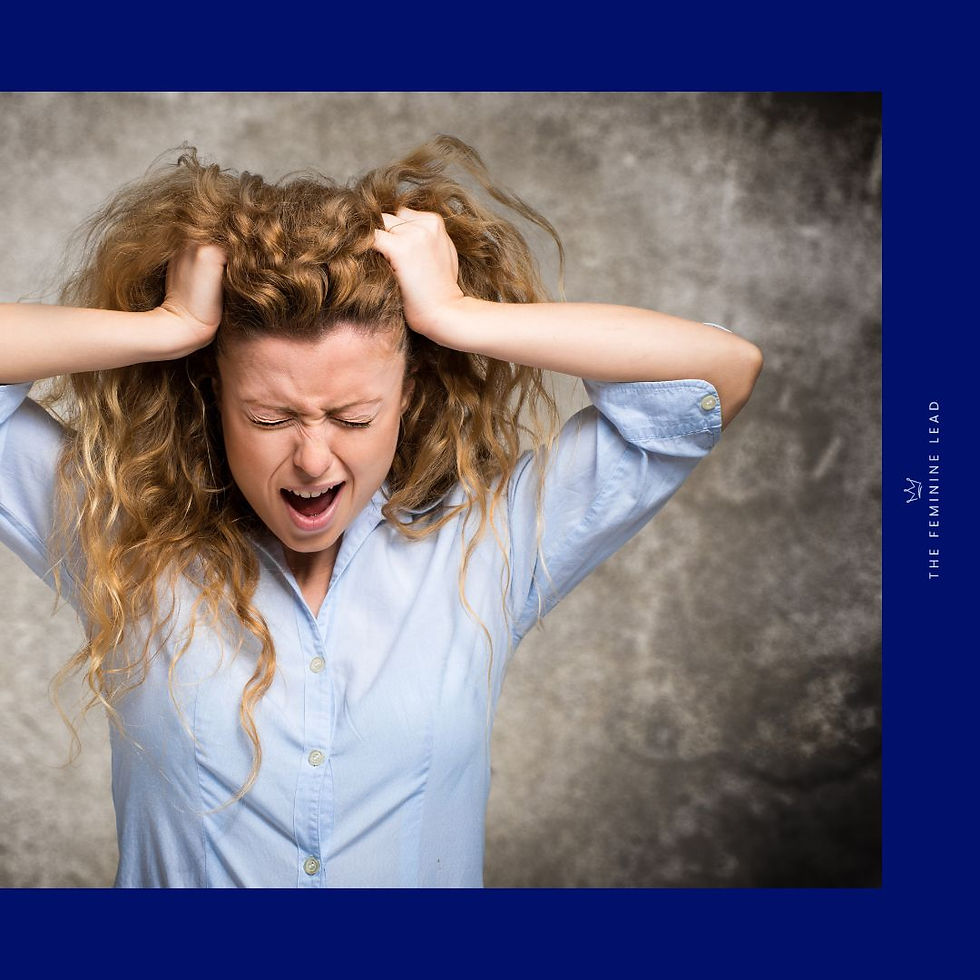Why You React So Strongly (And What Your Triggers Are Really Trying to Tell You)
- Chantelle Dantu

- Jun 30
- 3 min read

Have you ever had your whole mood shift after a passing comment from a colleague?
It wasn’t cruel. It wasn’t overtly offensive. But suddenly your chest tightens. Your heart races. Your thoughts spiral. You’re flooded with emotion, and you don’t know why.
This is what we call a trigger, and it’s more than just an overreaction. It’s a message from your unconscious, asking to be heard.
Triggers Aren’t Random. They’re Revealing.
Most people think triggers are about the present moment. But what if they’re actually rooted in your past?
In Jungian psychology, a trigger isn’t seen as a flaw; it’s seen as a signal. It’s your nervous system lighting up because something in your environment reminds you of an earlier experience, wound, or belief; often one you didn’t consciously realize you were still carrying.
Think of it like this:
A trigger is like a smoke alarm. It tells you something’s burning, but not what’s actually on fire. And your body reacts before your conscious mind even catches up.
Why This Matters in Leadership (and in Life)
When you’re in a leadership role or simply trying to hold yourself together in a high-functioning life, you’re expected to be composed, rational, and consistent.
But if you’re constantly reacting to hidden emotional material under the surface, your energy gets drained managing your responses instead of choosing them. That’s not power. And whether you know it or not, you are not choosing your response.
Real change begins when you realize you CAN choose...
From Reaction to Response: A Practice That Creates Space
When you’re triggered, your body reacts before you have time to think. You often move into old emotional patterns without realizing it, because your mind is scanning for danger and pattern-matching to the past.
To break that cycle, we need to create space between stimulus and response, space to observe, reflect, and choose differently.
One of the practices I teach for this is something I created called the A.L.L.O.W. Model. It’s a simple, powerful way to shift from emotional autopilot to conscious presence, and it reconnects you with the part of you that can respond with truth rather than react from protection.
Give The A.L.L.O.W. Model a try
Next time you're triggered by a situation, a comment, or even your own inner critic, use The Feminine Lead A.L.L.O.W. Model, a framework I've created that will be fully explored in my upcoming book. This has helped countless clients (as well as me) move from reactive patterns to conscious choice.
Acknowledge & Accept: Acknowledge the feeling & accept that it is currently within you.
Let It Be Resist the urge to change or suppress the emotion. Let it exist fully in this moment without judgment
Listen What thoughts are surfacing? What story are you telling yourself about what just happened?
Observe & Orient Notice where you feel this in your body. What does this emotion look like, feel like? Then gently orient all your attention into that sensation.
What & Why Ask with curiosity: Why am I feeling this way? Does this remind me of a previous experience? What is this really about
This isn't about endless self-analysis. The A.L.L.O.W. Model creates space between trigger and response, so you can lead from conscious choice rather than unconscious conditioning.
Your Triggers Are Invitations to Grow
When you start seeing your emotional responses as clues not character flaws, you reclaim your agency.
You’re not too emotional. You’re not overreacting. You’re being asked to pay attention to something that was never fully met in the past.
And when you meet that place with curiosity, rather than shame, something powerful happens: You stop reacting. You start leading & living from your whole self.
Reflection Prompt: What’s one situation at work or at home that consistently triggers you? What might it be pointing to underneath?
You don’t have to solve it today. Just noticing it is the beginning of everything.
.png)



Comments